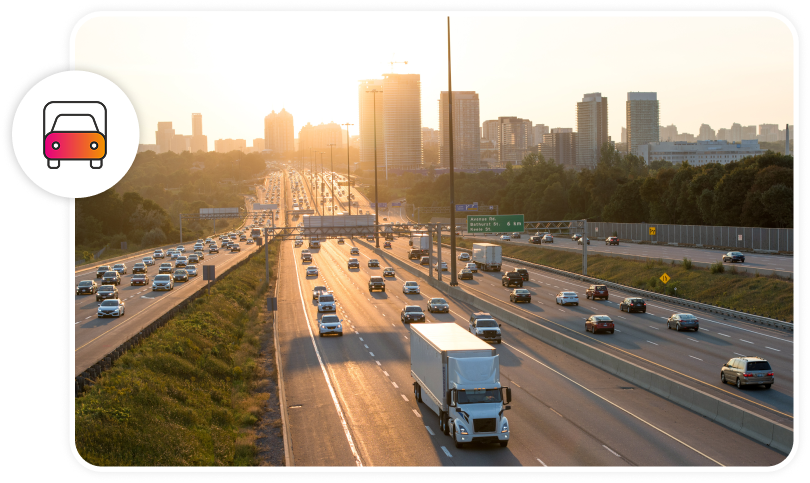The transportation sector is the eleventh-largest in Canada, yet it ranks fifth for the most incident claims resulting in lost work time.
With over one million workers, each lost-time claim contributes to significant losses for thousands of companies. The majority of these claims are connected to:
- Vehicle-related accidents
- Distracted driving
- Adverse weather

Top five most common transportation industry hazards
Vehicle-related accidents
Includes collisions which can lead to injuries or fatalities. They’re often a result of human error, equipment failure, poor road conditions, or a combination of these factors.
Distracted driving
A major cause of accidents, often due to mobile phone use or multitasking while driving.
Changing weather conditions
Adverse weather can lead to dangerous driving conditions, increasing the risk of accidents.
Slips, trips, and falls
Commonly occurs when entering or exiting vehicles, especially in poor weather conditions.
Ergonomic injuries
Long hours of driving and time spent waiting to load and unload can lead to musculoskeletal issues.
Transportation accident statistics
There were over 19,000 claims with lost work time in 2022 in the transportation industry, with 93 fatalities.
According to the WSIB, the industry is showing a negative trend on the safety index of 3.9 percent in the latest study.
There was an 11 percent increase in fatalities in 2023 across the transportation sectors compared to 2022
Be proactive—prevent workplace injuries!
Proactive safety starts with the hierarchy of controls. If hazards can’t be eliminated, engineering controls are the first level of protection. If those aren’t practical, utilize administrative controls like training, SOPs, and incident reporting. Finally, while PPE is essential, it provides the lowest level of protection, and should be used alongside other higher-level controls.
Policies Against Mobile Use While Driving
Implementing strict policies that prohibit the use of mobile phones and other distractions while driving is crucial.
Safe Entry and Exit Training
Provide drivers and workers with training on how to safely enter and exit vehicles. This includes techniques like maintaining three points of contact when climbing in and out of vehicles.
Ergonomic Training and Equipment
Providing ergonomic support and training drivers to maintain proper posture can alleviate the physical strain associated with long hours of driving.
Regular Vehicle Maintenance
Ensuring vehicles are regularly inspected and maintained is key to preventing mechanical issues. Standardized inspection checklists should be used to ensure vehicles are sufficiently maintained.
Connect with one of our health and safety experts today
With innovative technology, expert guidance, immersive online training, incident reporting tools, and risk assessment software, our award-winning Health & Safety software and support help transportation companies across Canada build stronger, more effective safety programs.


